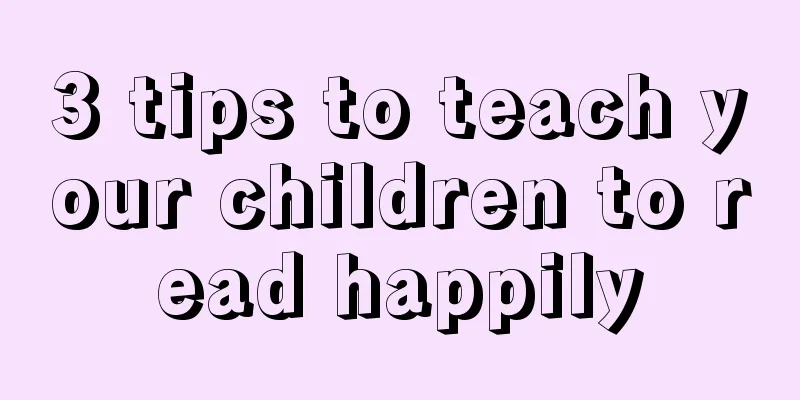3 tips to teach your children to read happily

|
Teaching children to read is a daunting task for both teachers and parents. Chinese characters are different from "phonetic characters" such as English. Children not only need to know the pinyin, but more importantly, they need to remember the shape of the characters. The methods of teaching children to read that we summarized today are very interesting and worth learning from. The first step: children's songs to learn words Children's songs are catchy, lively and interesting. Once you remember them, you will never forget them. In daily teaching, we can pay attention to grasping the characteristics of characters and compile some easy-to-understand nursery rhymes. For example, when teaching the character "碧", we can compile it into "Old man Wang and old man Bai, sitting on a big rock together"; the character "坐", we can compile it into "Two people sitting back to back on the ground"; the character "告", we can compile it into "Bite off the cow's tail in one bite"; the character "武", we can compile it into "The character 武 is a straw bag with a knife", etc. This kind of compilation is easy to learn and remember, and is interesting and can improve students' interest and ability in recognizing, distinguishing and remembering words. The second trick: Learn to read through comparison Many teachers have experienced this: there are always some students who confuse "哪" and "那". For example, when choosing words to fill in the blanks, you can write "Why are there so many new houses in the village?" The teacher can use the comparison method to teach. First, compare the pronunciations of the characters: “哪” is pronounced nǎ, and “那” is pronounced nà. Then compare the shapes of the characters: "哪" has an extra "口" than "那". Finally, help students understand the meaning of the words. In a sentence, "哪" is used to express questions, and "那" is used to refer to distant places or things. For example: "Where are you from?" "I'm going over there." In this way, students will be able to distinguish between "哪" and "那". The third trick: guess the riddles to learn words Introducing riddles into the memorization of new words and allowing students to learn and memorize some new words by guessing riddles will greatly stimulate students' curiosity for knowledge. For example, the word “goose” can be remembered as: I am a bird, and I walk swayingly. "Jian" can be remembered as: small on top, big on the bottom. "虽" can be recorded as: eating a worm in one bite. Using the above methods can not only allow students to remember new words, but also exercise their speaking ability and give play to their endless imagination. |
<<: 10 problems for newborns (jaundice, milk rash, spitting up, stuffy nose, hiccups, etc.)
>>: The 10 most effective rules for educating children
Recommend
What is the cause of the child's retinal hemorrhage?
Many families are worried when they see their chi...
How to detoxify the liver, gallbladder and intestines for children
Nowadays, everyone is using cars and other means ...
Risks of Multiple Tooth Surgery in Children
It is a common phenomenon for children to have su...
How can girls grow taller
Height is something that many of our friends want...
What do children know about diet?
Children cannot make random choices in their diet...
What are the clinical manifestations of convulsions in children?
Many people do not know what convulsions in child...
What are the precautions for baby tooth decay?
The health of baby teeth cannot be separated from...
What are the treatments for ADHD in children?
In recent years, the treatment effects of ADHD in...
Eight foods suitable for children to improve memory
Children's brain health is beneficial to impr...
Is there any problem with the baby's yellow-green stool?
Parents must pay attention to the baby's bowe...
What are the diets for children with asthma?
Infants and young children have poor resistance a...
How to treat children’s cough with traditional Chinese medicine?
Different weather and seasons will also cause sub...
What to do if the baby catches a cold and has diarrhea
The most common condition is that babies get cold...
Baby feels phlegm in throat when feeding
We all know that when mothers feed their newborns...
What should children with functional dyspepsia eat? Don't miss these foods
Children's digestive function is relatively p...









